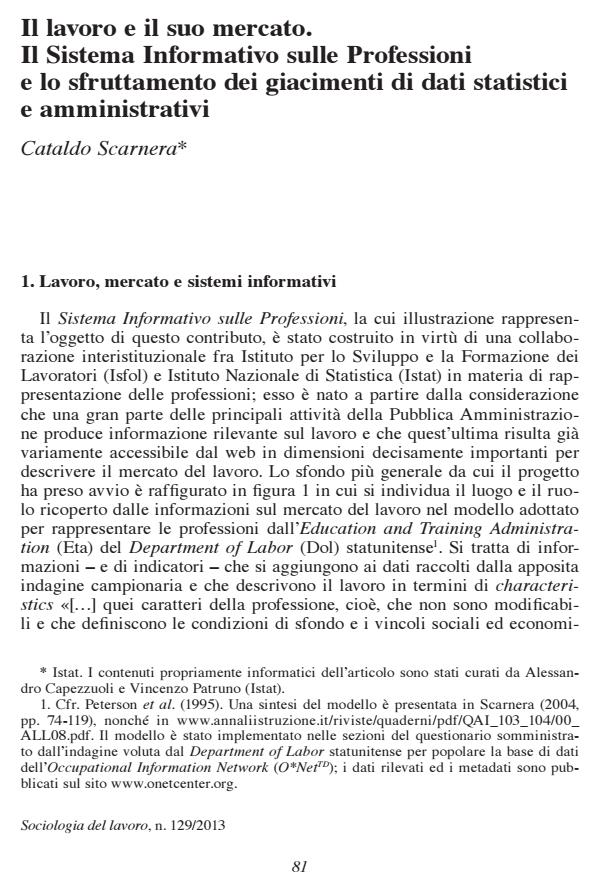The job and its market. Information system of Occupations: the use of statistical and administrative data
Journal title SOCIOLOGIA DEL LAVORO
Author/s Cataldo Scarnera
Publishing Year 2013 Issue 2013/129
Language Italian Pages 19 P. 81-99 File size 594 KB
DOI 10.3280/SL2013-129006
DOI is like a bar code for intellectual property: to have more infomation
click here
Below, you can see the article first page
If you want to buy this article in PDF format, you can do it, following the instructions to buy download credits

FrancoAngeli is member of Publishers International Linking Association, Inc (PILA), a not-for-profit association which run the CrossRef service enabling links to and from online scholarly content.
The paper offers an overview of the evolution which took place in Italy in order to provide standards of classification and representation of the occupations unique and shared between different actors operating in the labor market policies and training. In particular, the first part of the paper illustrates the current state of the art of Information system of Occupations describing the theoretical framework and, resources. Second, the article analyzes the system architecture and technical solutions adopted in order to address problems of integration and comparability of the data. The main goal of this system is ensuring quality, transparency and impartiality of information returned; in this sense the article underlines the difficulties in order to assure institutional partnership to build common representations of occupations. The analysis concludes by explaining the characteristics of a first experience, carried out in order to build a unique dataset of information handled by the system, in the logic of open data, to further enrichment of databases accessible to the research on the labor market.
Keywords: Information system of Occupations, Occupational Information Network (O*NETTM), job classification, labour market, institutional partnership
Cataldo Scarnera, Il lavoro e il suo mercato. Il Sistema Informativo sulle Professioni e lo sfruttamento dei giacimenti di dati statistici e amministrativi in "SOCIOLOGIA DEL LAVORO " 129/2013, pp 81-99, DOI: 10.3280/SL2013-129006